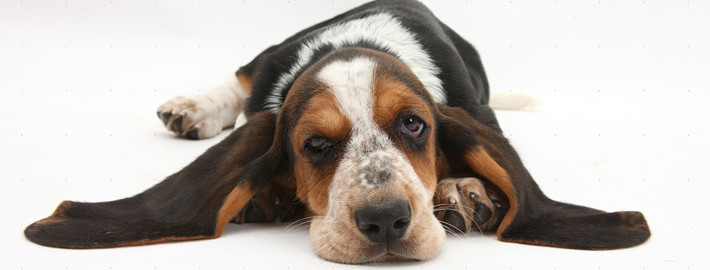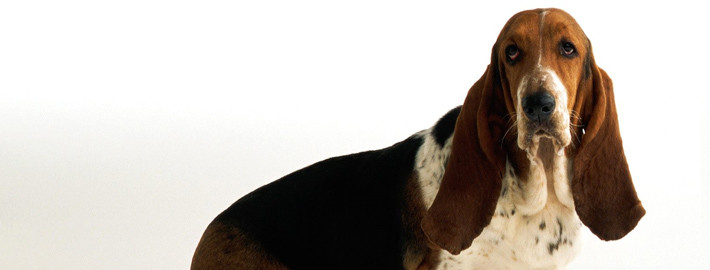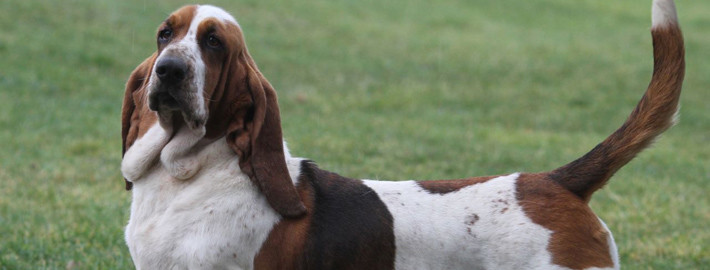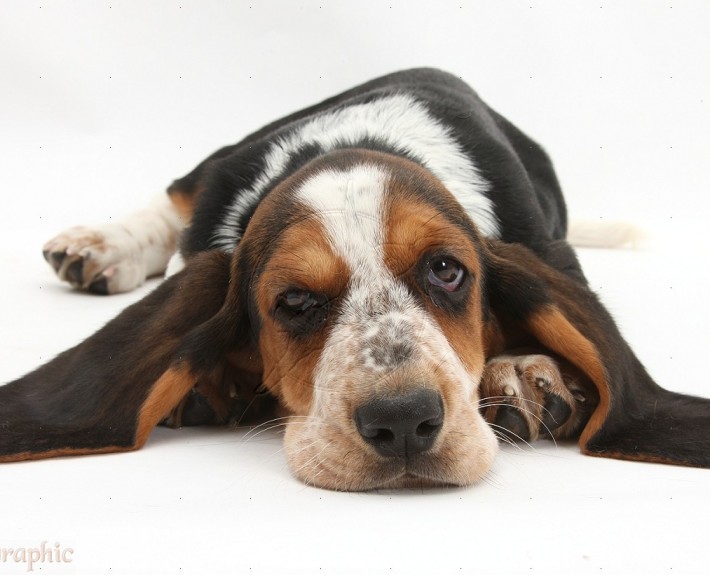What makes the Basset Hound Unique?
Easily recognized due to their long, floppy ears and low, elongated bodies the Basset Hound is a breed that dates back to at least the 16th century. They were originally created as hunting dogs but nonetheless make wonderful companions for families that contain young children.
Breed Groups
Page Contents
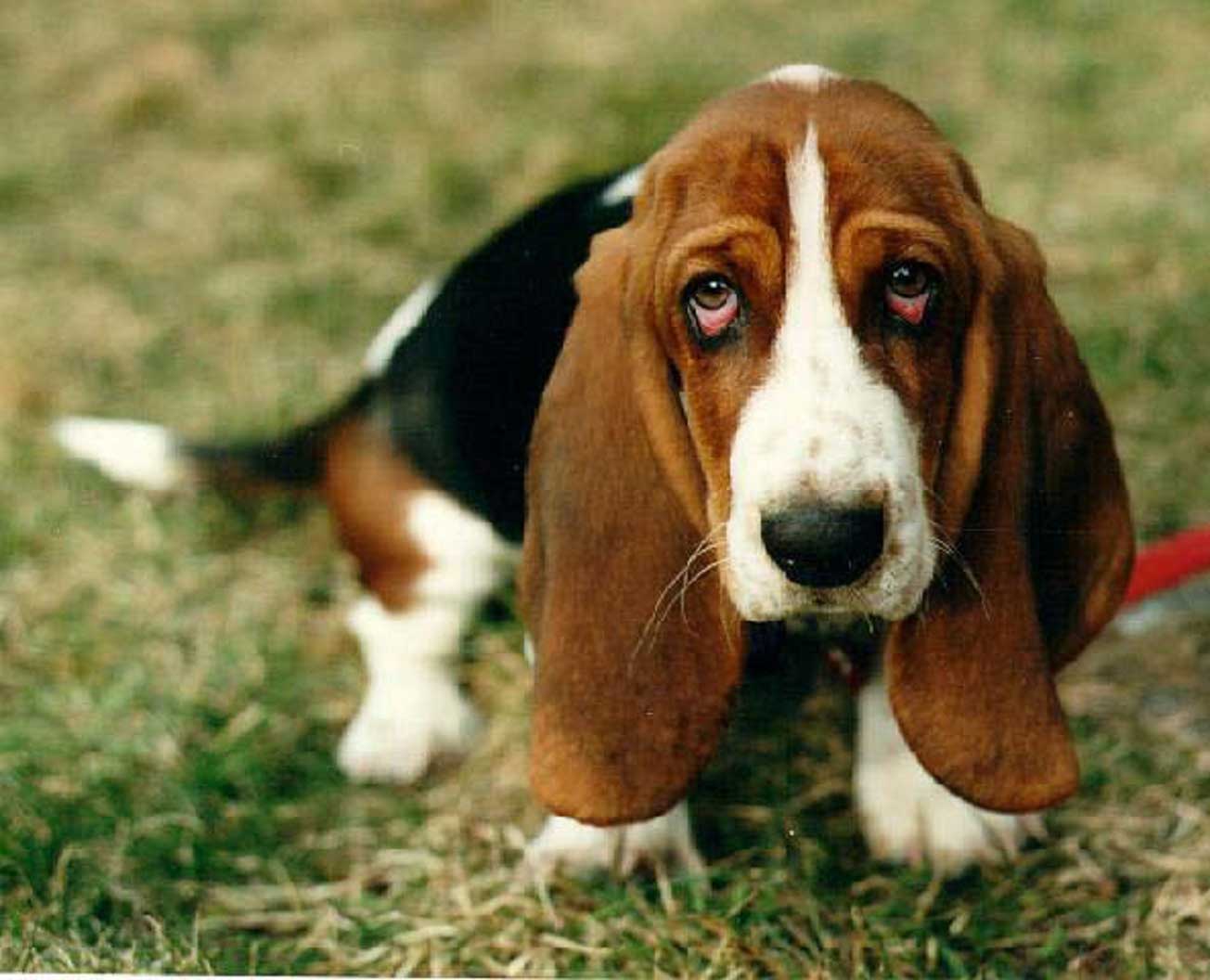
SnapShot
| Size: | Males – 30 to 38 cm (12 to 15 inches) Females – 28 to 36 cm (11 to 14 inches) |
| Weight: | Males – 23 to 29 kg (44.1 to 59.5 lb) Females – 20 to 27 kg (50.7 to 63.9 lb) |
| Origin: |
France, Great Britain, United Kingdom |
| Life Span: | 10 – 12 Years |
| Colour: | Brown & White, Tri-color, Red & White, Black & White, Lemon & White, Black & Brown |
| Litter Size: | 8 puppies |
Is the Basset Hound Right For You?
He may be best known as the Hush Puppy dog, but the Basset Hound is much more than an advertising icon. With his placid personality and short-statured yet noble appearance, the Basset Hound is a popular family companion, as well as a slow-paced but keen hunting dog. The Basset Hound is sweet, gentle, devoted, peaceful and naturally well-behaved. It fits into family life well. It is mild but not timid; very affectionate with its master and friendly with children. It can be a bit stubborn with meek owners and needs a firm, confident, and consistent owner who displays natural authority over the dog. Dogs need to know the rules of the house and have the humans stick to them. Bassets like to do tricks for food. They have a deep musical bark. The Basset Hound will do okay in an apartment. They are very inactive indoors but outdoors they will run for hours in play if given the chance. They will do okay without a yard, but should be given plenty of opportunities to run and play to keep healthy and trim.
In 5 Words
- Devoted
- Gentle
- Tenacious
- Friendly
- Sweet-Tempered
Characteristics
Learn About the Basset Hound
Description
General Description
Basset Hounds have heavy-set bodies, short legs, and wrinkled faces. Their comically long ears are said to help them track their quarry more easily by helping release latent scents from the ground. They have a large muzzle and typically walk with their noses to the ground. Their loose skin and weatherproof coats also give them an advantage when hunting.
Size
Generally speaking these dogs average about 60 pounds (27 kilograms) and 13 inches (33 centimeters) tall as breed. Females are slightly smaller than their male contemporaries. They average about 45 to 65 pounds (20 to 29 kilograms) and stand between 11 and 14 inches (28 to 36 centimeters) high. Males can be from 55 to 75 (24 to 35 kilograms) pounds in weight and 12 to 15 inches (30 to 38 centimeters) in height. American Kennel Club regulations further state that in the show ring these dogs should not exceed 15 inches at the highest point of their shoulder blades because this constitutes a disqualifying fault.
Coat
Bassets have short, dense fur that sheds a lot. These dogs can be almost any color with any type of marking, according to the American Kennel Club standards.
Short History of the Basset Hound
Developed by monks from the Abbey of St. Hubert, Basset Hounds were mentioned in hunting texts as early as the 1500s. Some sources state that Basset Hounds are likely to be a genetic mutation of the earlier St. Hubert’s hound that was bred by the same monks. In any case, these short dogs maintained the superior ability to track game but they could easily be followed on foot rather than needing to be accompanied on horseback. After the French Revolution what had once been the sport of kings became the province of common man. These dogs became popular hunting companions as a result.
Basset Hounds began to escalate in popularity during 1850s and 1860s. During this point, there were several breeders producing Basset Hounds that had somewhat divergent characteristic and it was sometime later before a breed standard as developed. Meanwhile, these dogs remained popular with the aristocracy as well as the common man. This breed later made their way to England and the United States. The dogs were shown at the Westminster Kennel Club show in 1884 and a year later the Basset Hound was officially recognized by the American Kennel Club (AKC). By 1935, the Basset Hound Club of America had been created and they continue to promote the breed to this very day.
Temperament
Basset Hounds tend to be friendly, laid-back individuals. They should live inside with their families, but owners will find that having access to a yard is also beneficial for these dogs. This breed gets along well with canines and other types of pets. Basset Hounds are also quite fond of children as well as the adult members of their human families.
These mild tempered scent hounds like nothing better than to track the source of interesting aromas, which can sometimes get them into trouble. These dogs also have a tendency to make loud noises, especially when they are left alone for long periods of time. Because of their vocal natures, Basset Hounds may not be a good choice for apartment dwellers.
Caring for Your Basset Hound
General Health
On average, members of this breed live about 11 years. Basset Hounds are prone to ailments such as von Willebrand’s disease, glaucoma, dysplasia, patellar luxation, intervertebral disc disease, thrombopathia, and hypothyroidism. This breed has a tendency to overeat so owners should also pay special attention to their Basset Hound’s diet and size to keep them from becoming obese.
Owners of young dogs should additionally be aware that Basset Hound Club of America recommends that puppies under a year old be prevented from hopping up or down on the furniture and also be kept off long staircases in order to prevent them from taking tumbles that could result in severe injuries. They further state on their website that there is no danger in dogs partaking in these activities after a year has passed.
Care
Daily
It is a good idea to either take Basset Hounds for a walk or allow them to play in a safely fenced in area at least once per day to keep them from becoming overweight. Drooling is also a problem for some Basset Hounds. As a result, their faces may need to be cleaned off frequently to prevent grime from accumulating and making them ill.
Weekly
Pets benefit from having their teeth brushed a few times a week. This prevents the onset of periodontal disease as well as the more noticeable problem of foul breath. Their ears and eyes should likewise be cleaned at least once a week. These dogs shed heavily and should be brushed several times a week to keep households from becoming inundated with fur.
Monthly
Basset Hounds will need to have their nails trimmed every four weeks or so. It is also recommended that pet owners apply flea, tick, and heartworm prevention medication on a regular basis. Most of these medicines are designed to be administered every month for best results.
Grooming & Bathing
These dogs can be bathed as frequently or infrequently as their owner chooses.
Exercise & Training
Some people perceive this breed as being stubborn and having selective hearing. These dogs are easy enough to train with consistent leadership and positive reinforcement. Basset Hounds are not hard to motivate as this breed loves food, but care should be taken not to overfeed them as this can lead to serious health problems. Patience is essential in training Basset Hounds because they will sometimes ignore people. Because these dogs often smell things and wander off, owners are further advised against letting their Basset Hounds off the leash in unenclosed spaces.

